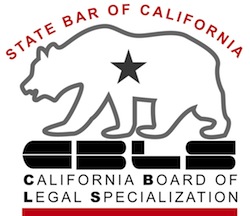Bankruptcy basics are simple, at least in concept: bankruptcy is the legal system’s remedy for debts beyond the ability of the person who owes money to pay.
Bankruptcy in the United States operates to satisfy a person’s debts to the extent possible and to enable those with debts they can’t pay to start over. Exemptions carve out the property that a bankruptcy debtor keeps for their fresh start.
It is governed by the federal law found in Title 11 of the United States Code.
As federal law, it supersedes any conflicting state law. That’s the operation of the Supremacy Clause of the Constitution in action.
With the exception of exemptions , it is the same from state to state. However, like anything man-made, it varies in practice as different courts apply the same law to the facts before them.
The basic bankruptcy bargain is full disclosure of one’s financial situation in exchange for a discharge of nearly all debts.
Bankruptcy basics: the chapters
There are four kinds of bankruptcy proceedings that impact individuals and businesses. They are referred to by the chapter of the federal Bankruptcy Code that describes them.
Chapter 7
Chapter 7 is the most common form of bankruptcy. It is a liquidation proceeding in which the debtor’s non-exempt assets, if any, are sold by the Chapter 7 trustee. The proceeds, after paying the trustee’s expenses, are distributed to creditors. Certain debts, like taxes and support, are paid ahead of other unsecured creditors.
Chapter 7 is available to individuals, married couples, corporations and partnerships. Individual debtors get a dischargewithin 4-6 months of filing the case.
If there are assets which are not removed from the bankruptcy estate by an exemption, the trustee takes control of those assets, sells them and pays creditors as much as the proceeds permit.
Any wages the debtor earns after the case is begun belong to the debtor; the creditors have no claim on those earnings. More about Chapter 7.
Chapter 11
Chapter 11 is a reorganization proceeding, typically for corporations or partnerships. Individuals, especially those whose debts exceed the limits of Chapter 13, may file Chapter 11.
In Chapter 11, the debtor usually remains in possession of his assets and continues to operate any business, subject to the oversight of the court and the creditors committee.
The debtor proposes a plan of reorganization. Creditors get to vote on whether to accept the plan. Once confirmed, binds both the debtor and the creditors to its terms of repayment.
Plans can call for
- repayment out of future profits,
- sales of some or all of the assets, or
- a merger or recapitalization
Chapter 11’s are generally more expensive than other chapters and have a serious failure rate.
Chapter 12
Chapter 12 is a simplified reorganization for family farmers, modeled after Chapter 13, where the debtor retains his property and pays creditors out of future income.
Chapter 13
Chapter 13 is a repayment plan for individuals with regular income and, since May, 2022, total debts under $2.75 million.
The debtor keeps his property and makes regular payments to the Chapter 13 trustee out of future income to pay creditors over time (3-5 years).
Repayment to creditors in Chapter 13 can range from next to nothing to 100% depending on the debtor’s income, the value of his assets and the make-up of the debt.
Certain debts that cannot be discharged in Chapter 7 can be discharged in Chapter 13. Chapter 13 also provides a mechanism for individuals to prevent foreclosures and repossessions. Debtors can catch up on their secured debts, unpaid taxes, or delinquent child support. Why I love Chapter 13.
Beyond bankruptcy basics
This is an overview of bankruptcy from 30,000 feet. It gets more complicated in the real world.
The detail depends on the facts of a debtor’s situation, the debtor’s goals, and the nuances of the law that governs those facts. This site has over 750 short articles about the details of bankruptcy. Our sister site, BankruptcyinBrief.com, has many posts on the basics.
Here, I also write about shortcomings in the bankruptcy world and challenges in our broader legal/economic system. Dig in.
Pay your debts or file bankruptcy?
Can I get credit after bankruptcy
How to interview a bankruptcy lawyer
Image: © Image Source – Fotolia.com






